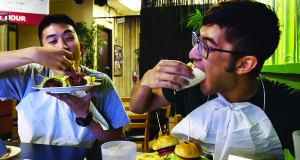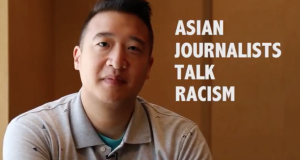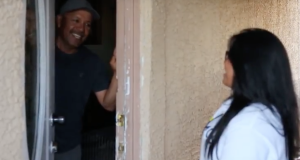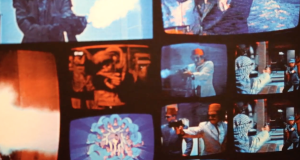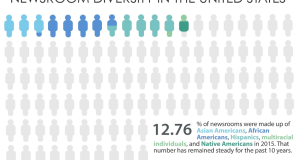When your college is on lockdown because of a shooting, being the editor of the campus paper presents unique dilemmas.
That’s where I found myself June 1. Shots had rung out at UCLA, and we at the Daily Bruin were tasked with covering the incident.
Information – and misinformation – rang out at the same time.
Police scanners picked up breathless radio calls. Random tweets and anonymous texts flowed into reporters’ twitter feeds and text messages.
For nearly three tense hours, fear gripped the campus. We weren’t sure where the shooter was, or who was at risk of being killed.

Jeong Park
Our staff wanted to inform the community as quickly as possible. That job had never felt more urgent.
In the heat of the moment, the Daily Bruin sent this tweet: “Shooter is described as a white male about 6 feet tall, according to sources.”
Just an hour later, it had garnered hundreds of retweets and placement in stories from prominent media outlets. The discussion went beyond the immediate incident, with some asking why white men who carry out mass shootings are not labeled terrorists.
But the tweet was wrong. It had come from a mix of police scanner traffic and students text messages sent to reporters.
As we know now, the shooter was an Indian-American man – a former doctoral student who killed his former advisor and then himself.
We deleted the tweet and explained our rationale for doing so in a follow-up tweet posted the night of the shooting, but the backlash had begun. Instead of the community asking about who should be called a terrorist, we were accused of carrying out a “liberal agenda” to avoid talking about the shooter being a person of color.
Correcting earlier tweets: pic.twitter.com/kYFgHoz1ZC
— Daily Bruin (@dailybruin) June 2, 2016
Overall, many students had come to us and said how much they appreciated our coverage. Beyond that tweet, our work demonstrated what we could do at our best. Reporters called dormitory resident assistants and confirmed what buildings had not been attacked. Photographers were deployed to capture images of the scene and aftermath of the shooting.
But for me, the damage was done. Or at least the lesson learned.
I learned how a tweet containing erroneous information could erode our credibility. There was no do-over, and only confirmation prior to publication can be the solution. It was a reminder of the tenants of the SPJ Code of Ethics that says “neither speed nor format excuses inaccuracy.”
Publishing inaccurate information, even when it’s with the best of intentions, can only hurt everyone involved. It’s easy to forget this when you first learn the code of ethics as concept, but that day has reinforced how tangible the code really is in a real-life situation. It reminded me to think about what I knew before making any decision, even and especially at the time when my community is struggling.
I will never forget that tweet. There are technical skills in which I fail over and over again until I succeed, but I now know how and why accuracy and confirmation in journalism is the area in which I cannot err.
 VOICES Publishing from the AAJA National Convention
VOICES Publishing from the AAJA National Convention



